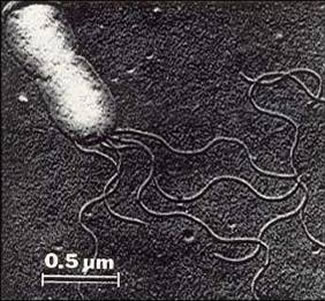Background
Bartonellosis [bar-ton-el-lo-sis] is an infection that is caused by bacteria of the Bartonella species. These are faculative intracellular bacteria which are associated with a number of emerging anthropozoonoses. They have been detected in, or isolated from, diverse vertebrate hosts, including humans, various domestic animals, and a wide range of wildlife which serve as natural reservoirs for bacteria.
Bartonellosis
Of the ten Bartonella species that are believed to produce infection in humans, the most commonly encountered are Bartonella henselae, B. quintana, and B. bacilliformis. The latter causes Oroya fever and Verruga peruana. Outbreaks are limited to the Andes and cases elsewhere have been found in travellers. B. quintana is the cause of Trench fever, which is found world-wide and causes febrile outbreaks. Poor sanitation and lack of personal hygiene strongly correlates with transmission by the body louse, Pediculis humanus. B. quintana is emerging as a recognised cause of disease amongst homeless people and AIDS sufferers. B. henselae is the cause of Cat Scratch Disease and is found throughout the world in association with domestic and feral cats. In the UK, B. henselae is considered to be endemic to the cat and dog population. Both the cat flea Ctenocephalides felis and Ixodid ticks are arthropod vectors.
Signs & Symptoms
Bartonella infections can cause varying degrees of illness, from benign lymphadenopathy to life-threatening systemic disease. In cases of B. henselae infections, lymph nodes (especially around the head, neck, and upper limbs) may become inflamed. Fever, headache, and loss of appetite may occur. Rare complications are bacillary angiomatosis and Parinaud’s oculoglandular syndrome.
A number of studies demonstrate the roll of B. henselae as a concurrent infection in cases of Borreliosis. In one study, elevated levels of B. henselae-specific antibodies were detected by immunoflorescent assay in a number of patients, and B. henselae-specific DNA was detected in their blood and cerebrospinal fluid. B. henselae-specific DNA was also detected in live ticks obtained from the households of two of these patients.
The incubation of B. henselae is generally 3-12 days. A lesion may appear at the site of inocculation, but this may be difficult to identify in cases of Borreliosis when it could be combined with an Erythema Migrans rash. After 1-3 weeks, lymphadenopathy generally appears and is combined with a low-grade fever. Atypical presentations include encephalopathy, joint inflammation, vision loss and respiratory dysfunction. More acute disease may precede, or occur without, lymphadenopathy.
Testing
An indirect Immunofluorescence Assay (IFA) is the principle test used.
Treatment
Bartonella infections are generally treated with macrolides, tertracyclines, aminoglycosides, or chloramphenicol. The latter is not usually used to treat either B. henselae or B. quintana infections, although it has been used to treat B. bacilliformis.
Duration of therapy is commonly at least three weeks, but longer courses may be required for disseminated disease. Because these infections often fail to respond to therapy, or patients experience relapse later, switching to antibiotics from other classes may be needed.
Other Diseases




